#holmes herbert
Explore tagged Tumblr posts
Text
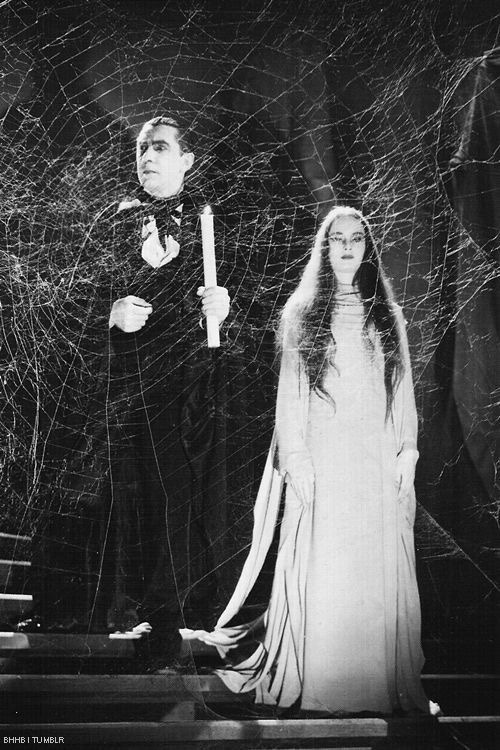
Mark of the Vampire (1935)
#mark of the vampire#vamp#vampyr#vampire#vampire aesthetic#vampiric#vintage movies#vintage horror#vintage movie#alternative goth#gothcore#goth aesthetic#gothic#gothic aesthetic#dark aesthetic#holmes herbert#jean hersholt#bela lugosi
227 notes
·
View notes
Text


Films Watched in 2024: 99. The Mummy's Curse (1944) - Dir. Leslie Goodwins
#The Mummy's Curse#Leslie Goodwins#Lon Chaney Jr.#Peter Coe#Virginia Christie#Kay Harding#Dennis Moore#Martin Kosleck#Kurt Katch#Holmes Herbert#Napoleon Simpson#Ann Codee#The Mummy#Universal Monsters#Classic Horror#Films Watched in 2024#My Edits#My Post
30 notes
·
View notes
Text


Up the Ladder (1925, Edward Sloman)
2 notes
·
View notes
Text
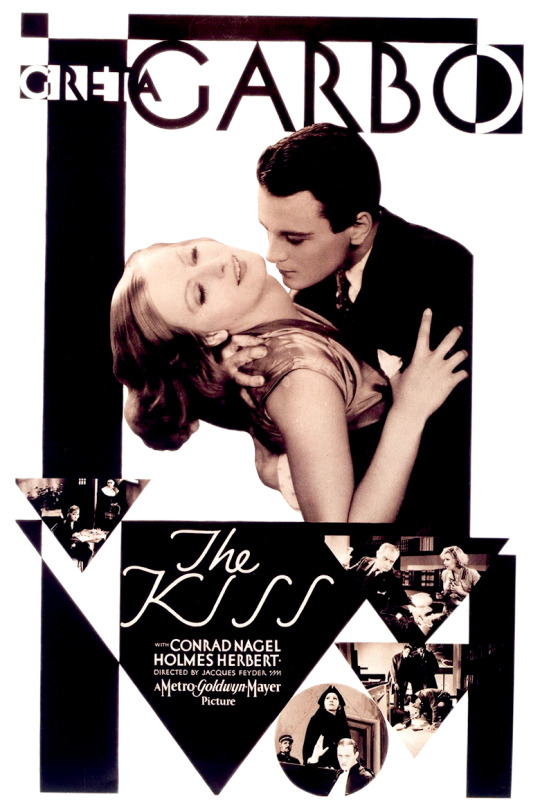
5 notes
·
View notes
Text

Bad movie I have Dressed to Kill 1946
#Dressed to Kill#Basil Rathbone#Nigel Bruce#Patricia Morison#Edmund Breon#Frederick Worlock#Carl Harbord#Patricia Cameron#Holmes Herbert#Harry Cording#Leyland Hodgson#Mary Gordon#Ian Wolfe#Harry Allen#Frank Baker#Guy Bellis#Wilson Benge#Marjorie Bennett#Ted Billings#Barbara Brewster#Gloria Brewster#Lillian Bronson#Jack Curtis#Cyril Delevanti#Tom Dillon#Bess Flowers#Topsy Glyn#Bobbie Hale#Charlie Hall#Olaf Hytten
4 notes
·
View notes
Text

Holmes Herbert, June Collyer, and George O'Brien in East Side, West Side (Allan Dwan, 1927)
Cast: George O'Brien, Virginia Valli, Holmes Herbert, J. Farrell MacDonald, Frank Allworth, June Collyer, John Miltern, Dore Davidson, Sonia Nodell, Frank Dodge, Dan Wolheim, William Frederic, Jean Armour. Screenplay: Allan Dwan, based on a novel by Felix Riesenberg. Cinematography: Theodore J. Pahle, George Webber.
In Allan Dwan's silent East Side, West Side, big, likable George O'Brien plays big, likable John Breen, a naïf in the city. O'Brien also played a naïf in the city in his other big film of 1927, F.W. Murnau's Sunrise: A Song of Two Humans. Murnau's film is an acknowledged masterpiece and Dwan's isn't, though Sunrise is melodrama striving to be art, whereas East Side, West is unabashed melodrama, rags to riches, interrupted romances, secret parentage, self-sacrificing heroism, sneaking villainy, happy ending and so on. Somehow Dwan manages to stuff all that, plus a subway cave-in and a sinking passenger liner, into a tidy 90 minutes. It all begins with O'Brien's Breen looking at the Manhattan skyline from the barge he lives on with his mother and stepfather, and longing to be part of it all. He gets his wish, sort of, when the barge is swamped by a passing ship and his parents drown. He swims to shore and hides out in the cellar of the Lipvitch family's home. They take him in and put him to work assisting Papa Lipvitch in the tailor shop, and he begins a shy flirtation with the Lipvitch daughter, Becka (Virginia Valli). A suitor for Becka's hand, known as Flash (Frank Allworth), spots Breen's talent for fisticuffs and helps him get a start as a prizefighter. When he begins to make a name for himself, he catches the attention of the wealthy developer Gilbert Van Horn (Holmes Herbert), who soon recognizes that Breen is his long-lost son -- he was forced to annul his marriage to Breen's mother, who decided never to tell her son about his father. Uncertain whether to reveal the truth to Breen, Van Horn asks Breen what he would do if he ever met his father: "I'd kill him!" Breen replies. (The italics are in the title card.) Van Horn decides to keep the secret, but he takes Breen in and tries to fulfill his desire to become a builder in the city he loves. He also introduces him to his pretty ward, Josephine (June Collyer), setting up a rivalry with Becka. Dwan never wastes time putting all this plot into place, which proceeds as you might expect, the story flavored with evocative shots of the city. The film touches only lightly on the ethnic character of the East Side: The Irish are seen as pugnacious and clannish, and the Lipvitches are obviously meant to be Jewish. There's some stereotyping in the penny-pinching character of Papa Lipvitch (Dore Davidson), but the issue of intermarriage is never raised in the case of Becka and Breen. East Side, West Side is the only silent film in the Criterion Channel's retrospective of Allan Dwan's work, but it makes me wish there were more.
3 notes
·
View notes
Text
The Little Princess
The Little Princess is the classic Shirley Temple film where a little girl goes from riches to rags. She searches for her father, reported missing during the Second Boer War. Continue reading The Little Princess
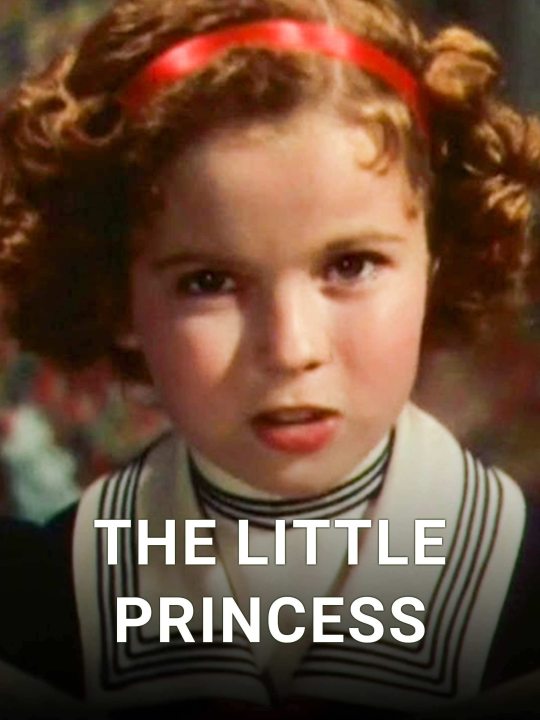
View On WordPress
#1939#Anita Louise#Arthur Treacher#Cesar Romero#E. E. Clive#Eily Malyon#Holmes Herbert#Ian Hunter#Miles Mander#Richard Greene#Shirley Temple
0 notes
Text
Top 5 mlm ships that have been etched into my soul and why.
1, Spirk


2, Mshenko
Cause i love being sad, lonely and straight until the third game.

3,Johnlock
I was a chronically online 12 year old who swore never to ship anything ever again but failing miserably and then shipping johnlock until..now and forever?

4,Gentlebeard
largely caused by the fact that i watched both seasons right around when they had come out, which also happened to be around summer, so i wasn’t being too seasonally melodramatic!
(These guys cancel out the negative energy that emits from the otherwise doomed pairings on this list btw)


5, Danbert
No this does not invalidate the statement made in number 4.

#star trek tos#Spirk#james t kirk#spock#bbc sherlock#johnlock#sherlock holmes#john watson#mass effect#male shepard#kaidan alenko#ofmd#our flag means death#gentlebeard#stede bonnet#blackbeard#reanimator#bride of reanimator#dan cain#herbert west#danbert#gay
23 notes
·
View notes
Text

Sherlock Pocket
I was sad that Pocket died so quickly at the end of the episode, I would love to see him again in the series, he is so cute
Maybe I'd draw Pip as Watson, Pocket would probably go around investigating things and people off (especially Estella) and Pip would just follow him around to keep him from getting into trouble
I particularly liked the episode, I just didn't like how mean Matt and Trey were with the designs 😭
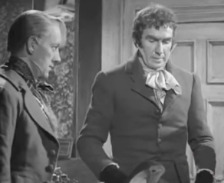
Older Pocket and Joe :)
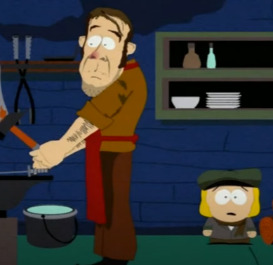
I couldn't get any pictures of Mrs. Havisham from south park, but she looked like a dinosaur, next to Estella she looked like she was 6 feet tall, I might redesign them too
#south park#southpark#my art#south park art#pip pirrup#sp art#herbert pocket#great expectations#estella havisham#charles dickens#fan art#art#artwork#sherlock holmes
36 notes
·
View notes
Text

Dann brauchten wir gleich schon wieder einen Gedenkfilm, für den immer herrlichen, nimmermüden Alan Arkin. Im fabelhaften Sherlock-Holmes-Nebenkanon-Abenteuer The Seven Percent Solution spielt er den ungewohnt unternehmungslustigen Sigmund Freud (rechts), dem es nicht nur gelingt, mittels Aneignung von Holmes' Methoden diesen von seiner Kokainsucht zu heilen und einen aufregenden Kriminalfall zu lösen, sondern auch noch Dr. Moriarty von dem Verdacht reinzuwaschen, er sei der Napoleon des Verbrechens. Als wäre das alles nicht wundersam genug, gibt es als Schmankerl noch ein Sondheim-Liedchen.
#The Seven-Per-Cent Solution#Alan Arkin#Nachrufe#Vanessa Redgrave#Robert Duvall#Nicol Williamson#Laurence Olivier#Joel Grey#Samantha Eggar#Charles Gray#Film gesehen#Herbert Ross#Sherlock Holmes#Stephen Sondheim
3 notes
·
View notes
Text
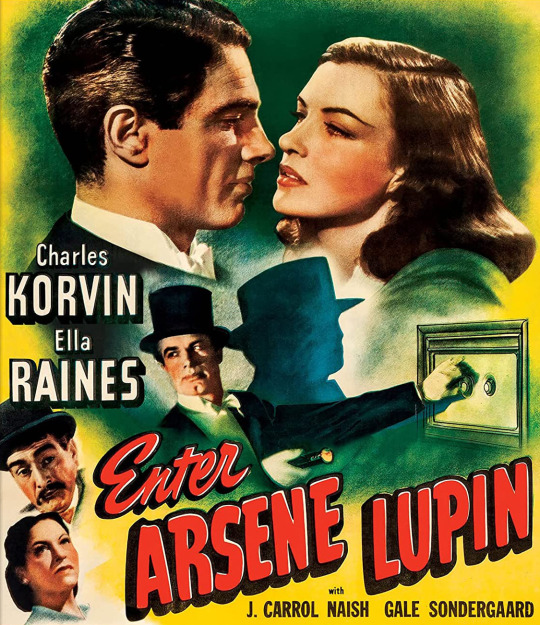
Films Watched in 2024: 80. Enter Arsène Lupin (1944) - Dir. Ford Beebe
#Enter Arsène Lupin#Ford Beebe#Charles Korvin#Ella Raines#J. Carroll Naish#George Dolenz#Gale Sondergaard#Miles Mander#Leyland Hodgson#Holmes Herbert#Arsène Lupin#Maurice Leblanc#Films Watched in 2024#My Post
2 notes
·
View notes
Text


Holmes Herbert as Bob Newhall & Priscilla Moran as Peggy in Up the Ladder (1925, Edward Sloman)
#if there's a one pitiful character in this film#that's you mr. bob newhall#at least your wife cheated on you with the husband of the woman you secretly loved#but you even did not start your own#up the ladder 1925#holmes herbert#priscilla moran
2 notes
·
View notes
Text
SCoR - Section I, Ch. 3 "Language and Knowledge in Everyday Life"
summary of "The Social Construction of Reality" by Berger and Luckmann, gotta repost because Tumblr fucked up the article slugs and I couldn't link to individual posts correctly
I. Human expressivity can be concretized/objectified ("objectivation") and therefore the subjective can be made part of a shared objective reality.
II. The reality of everyday life is filled with, and possible because of, these "objectivations."
III. A "sign" is a special case of objectivation, in that it is explicitly intended to serve as an index of subjective meaning.
IV. Signs are clustered in systems, and as objectivations have a property of "detachibility" from the here-and-now; "a dance is less a part of the dancer than a snarl is a part of the snarler."
V. Spoken language i.e. vocal signs is the most important sign system compared to eg. gesture, movement, artifact, etc; it is language because of detachibility
VI. The detachibility of language lies in its ability to communicate meaning beyond the subjective here-and-now.
VII. Languge also possesses a quality of rapid reciprocity in face-to-face interaction; subjectivity can be synchronized. I also hear myself; my subjectivity becomes more accessible to me in conversation. "Men must talk about themselves until they know themselves."
VIII. Language has its origins in, and mainly references, shared objective reality. It is external and coercive; it imposes patterns in order to be successful as communication; it anonymizes as it becomes more broadly applicable.
IX. Language also integrates different aspects of everyday life into a more meaningful whole - "here and now" can also be "this and that," "then and now", etc.
X. Language can integrate non-reality as well, eg describing a dream embeds a disjoint "reality" into everyday reality.
XI. A theme that spans realities in this way can b defined as a "symbol." The linguistic mode that manifests these symbols is "symbolic language," characterized by maximal detachment from everyday reality. Religion, philosophy, art, science are examples of such symbolic languages/symbol systems, and are essential constituents of everyday life.
XII. The structure and usage oflanguge defines (precisely or loosely) "zones of meaning" or "semantic fields" eg the tu/vous dichotomy in French defines zones of social intimacy, or occupational languages (medicine, engineering, etc) define their own zones, etc. Semantic fields represent stocks of social knowledge.
XIII. Semantic fields representing social relational knowledge allow "placement" i.e. social role definition
XIV. Since much of everyday life is dominated by the "pragmatic motive", much of social knowledge consists of "recipes" (procedures, heuristics, algorithms) for resolving or addressing social problems/situations.
XV. Social knowledge is differentiated by degree of familiarity: that which I do more, I understand more fully/embody the semantic field more fully.
XVI. These semantic fields are taken as "valid until further notice" i.e. until they cannot provide a routine to handle a given situation.
XVII. The semantic fields I embody - the fraction of the social stock of knowledge that I possess - is a lucid zone behind which there is a background of darkness, that which I do not and in many cases cannot know.
XVIII. Semantic fields are also structured by relevance; what is and is not relevant for me overlaps, or doesn't, with other folks relevant semantic fields; relevance is also contextual.
XIX. Semantic fields are also unevenly distributed: that which I know, others may not, and vice-versa - thus knowledge of the distribution of knowledge is an important part of social knowledge.
----
Notes:
re: III and XI - discussion of signs/symbols may be borrowing from semiotic theory here, but usage seems different from what I recall of my (limited) reading
re: VII - echoes of Paul Graham on essay-writing - expression is creation/crystallization/objectification
re: IX - language flattens the past and brings it into the present - the "depth" of social reality/semantic fields is always apprehended in the present - holograms on the surface of a black hole, an infinitely small layer of present knowledge that is refreshed by objective artifacts - including people - but has no existence outside of now
re: XII - semantic field has analogy to electrical/magnetic/gravitational fields of physics? it stores… something, it grows and shrinks, it can dissipate, it is carried in a medium, etc…
re: XIV, XV - Herbert Simon - interfaces - abstraction of knowledge: i make a phone call but do not need to know how phone system works - Sherlock Holmes brain-attic analogy
Also re: XV - increasing density of knowledge means more need for abstraction/interfaces that "hide" that complexity - there is only so much a person can know, the more complex the whole the less each person can embody ("the machine stops" as a limiting case)
re: XVI - semantic fields can fail OR be contradictory - cognitive dissonance - pernicious social issues as cultural cognitive dissonance eg abortion, gun control - ripe fields of exploitation for political extremists BECAUSE they are complexities that have not been reduced - energy minimization preferred, "answers" needed - the dialectic, thesis and antithesis without (yet) synthesis
#the social construction of reality#sociology#energy minimization#dialectic#herbert simon#sherlock holmes#paul graham#semiotics#abstraction#the machine stops
1 note
·
View note
Text

A Gordon Head photograph of Holmes Herbert and Fredric March on the set of Dr. Jekyll and Mr. Hyde (1931 Paramount). Rouben Mamoulian is at right with Karl Struss and the camera crew.
Photographic Restoration ©2025 Mark A. Vieira.
#dr jekyll and mr hyde#1931#pre code#hollywood#pre code horror#frederic march#paramount pictures#1930s#30s
88 notes
·
View notes
Text
Michael Dibdin's "The Last Sherlock Holmes Story", first published 1978, in paperback 1989, reprinted with corrections 1990, reset 1999 - this copy will of course be post-1999, given that inclusion, but not by a great deal, because the original price was £5.99 (cries), and in the back there's an order sheet for Dibdin's other books that includes both a contact email and fax number for the publishers.
Anyway, typed up sort of as a warm-up to typing up some more of my grandma's work tomorrow (because reading paperback type is a sight easier than Millie's biro scrawl, at times), and put under the cut to not block the entirety of everyone's dashes, the foreword reads as follows -
On the 16th of February 1926, John Herbert Watson, M.D. - better known to millions as the 'Dr Watson' of Arthur Conan Doyle's Sherlock Holmes stories - died of injuries sustained in a fall at his home near Lyndhurst in Hampshire. He was seventy-three. When his will came to be read it was found that in a codicil he had provided for a box of papers to be left on deposit with his bankers for a period of not less than fifty years, at the end of which time it was to be opened and the contents made public.
The world in which Watson grew up had already been swept away by the Great War, in which he himself played a small but honourable role. Soon the brash unstable world that replaced it was in turn weighed in the balances and found wanting. From its smouldering ashes, after forty years of labour pains, the twentieth century was finally born. The new age grew to adolescence and then to manhood. It overran the earth, changing whatever it touched out of all recognition. This infant prodigy was celebrating its thirtieth birthday when, in the summer of 1976, a dented metal dispatch-box was duly brought up - like treasure from some fabled wreck - out of the vaults where it had laid silently for half a century. No one had any idea what it contained. The consensus of opinion was that the papers represented the unpublished notes of those cases on which Watson had collaborated with Sherlock Holmes, and which for various reasons had not been made public. Interest therefore ran high in the sombre panelled office where the manager of the bank, in the presence of Watson's great-nephew, raised the battered lid bearing the words 'John H. Watson, M.D., Late Army Medical Department'. The box was found to contain, together with various items of purely personal interest, a wax-sealed package of 164 typed foolscap pages, signed, and dated October 1922.
One thing was immediately evident: the document left by Dr Watson was not a collection of notes but one continuous narrative. After some discussion it was decided that the best course would be to read this aloud to the assembled company, so that its import could be judged. Thus it came about that what one of the stunned audience later termed 'a criminological time-bomb' made its public debut in the punctilious tones of an elderly man of finance. The force of the explosion was in no way diminished thereby. Within a few days of that momentous reading, rumours began to circulate about the exact nature of the revelations contained in 'the Watson papers'. At about the same time, a powerful and energetic lobby was formed by various parties united only in their determination that the papers should never be published. Their methods were both cunning and resourceful, ranging from personal persuasion to attempted arson. One of our better-known Holmesians submitted a long letter in which he successively disclosed what he called the 'well-documented fact' that Watson was 'practically a delusional psychotic from 1919 onwards', pleaded that 'a veil of discretion be drawn over his pathetic ravings', protested that publication 'would be as preposterous as the BBC interviewing some maniac who claims to be Napoleon', and finally threatened us with 'the very real possibility of prolonged and costly litigation if this lunatic libel ever sees the light of day'. Fortunately not all the correspondence we received was this strident. We particularly cherish a letter from one S. Holmes of Sussex, who vehemently denied reports of his death while extolling the virtues of a 'miracle diet' based on royal jelly, his monograph on which he was prepared to let us publish at a mutually acceptable fee!
There can be no question that the contents of this book will prove extremely controversial. Many people will be deeply shocked by the nature of Watson's statement. Many will no doubt prefer to reject it rather than surrender the beliefs of a lifetime. Others will at least regret that two of the great mysteries of crime are finally solved, and will seek to discredit the solution. It is true that Watson's claims can no longer be substantiated. But every one of his references to a known event has been checked by our research team against the facts - many of which were not publicly available in 1922 - and we can certify that no obvious anomalies exist. The detractors may say what they like, but they cannot deny that the present version fits the evidence. That it is true is at the very least possible. We believe that on mature consideration many readers will come to share our conviction that it is in fact extremely probable.
The preparation of the typescript for the press has not been onerous. Editorial intervention has been restricted to the slight correction of a few solecisms, the division of the original into chapters, and the provision of some indispensable footnotes. Apart from these gentle ministrations the work has been left to speak for itself - as, despite the author's protests, it so very effectively does.
- The Editors
---
The first chapter begins with half a page in ACD style writing, and is quickly interrupted by Watson complaining that he cannot write the same way Doyle does, and his writing will be dismissed as "ill-told tales" - but he goes on -
"But then it is none of my business to convince anyone. I leave that to men of letters. I am a doctor and a soldier; all I can do is make my report.
But at once I run up against a problem which A.C.D. never dreamed of - I cannot know who is reading this. These words will not see print before 1972, at the earliest. What manner of men will walk the earth at that fabulous date? Will any of this matter to you? Perhaps no one then will even have heard of Jack the Ripper, or of Sherlock Holmes either. How can I know? Nevertheless, I must go on, and if I say too much or too little for your understanding, you will no doubt pardon an old man living out his days in a barbarous age - an age of darkness. For my part, I will try not to take too much for granted."

It's not ACD, but it wr a quid like
He's given Watson's middle name as Herbert, which I am completely ignoring, and it seems like the story itself is s'mat to do wi Jack the Ripper, by the blurb
#herbert?! i ask you#holmes#tho not acd#well it's an interesting start#hey. sir. hey mista. what the fuck will i be 'deeply shocked' by. hey. what is the 'criminological time bomb'. tell me immediately.
6 notes
·
View notes
Text
My headcanon about Herbert West is that like Sherlock Holmes, he purposely avoids learning/actively forgets pieces of information he doesn’t deem necessary to store in his brain. For instance he doesn’t have a drivers’ license so he doesn’t know what colors on stoplights mean. He doesn’t know the earth orbits the sun (he’s a biologist and chemist, not an astrophysicist). He couldn’t tell you the capital or even the name of the state he’s currently residing in if you held a gun to his head. It simply does not matter. It regularly boggles Dan’s mind the things that the smartest person he’s ever met doesn’t know.
But he remembers Dan’s birthday. And Dan’s food allergies. And he remembers to record Dan’s favorite shows on the VCR when Dan won’t be home to watch, even when Dan himself forgets. And a million other things that Dan didn’t even realize Herbert had taken notice of.
Herbert remembers what’s important.
185 notes
·
View notes